About this detail of the Tiger
The Tiger's gun had a long barrel and the center of gravity was far out beyond the axis. The gun required a counterbalance so that it could be easily elevated by the gunner.
In the original design, a complex arrangement of two springs was located in the forward right corner of the turret. This was used in all turrets with a drum cupola.
An arm was attached to the turret roof by an axle. It elevated and depressed with the gun.
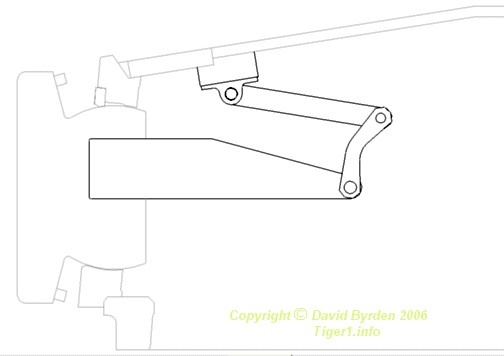
This diagram is a section through the front of the turret, looking towards the right-hand side. It shows the arm on the roof when the gun is in the level position. The gun is not drawn, but the outline of the mantlet is shown.
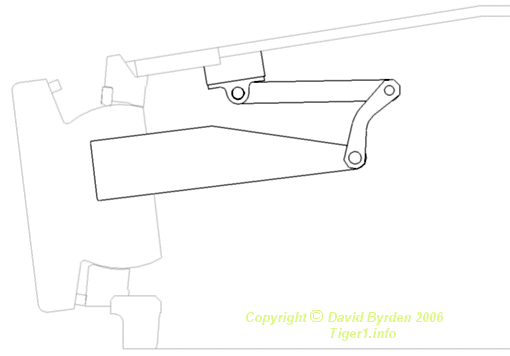
In this diagram, the gun is depressed as far as possible. A stopper bump on the mantlet presses against the front armour of the turret.
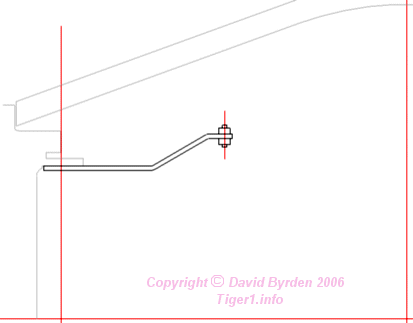
A straight arm is fixed to the inner right side of the mantlet, and it is crosslinked to the moving arm on the roof. Therefore the moving arm depresses with the gun. This diagram shows the arm from above.
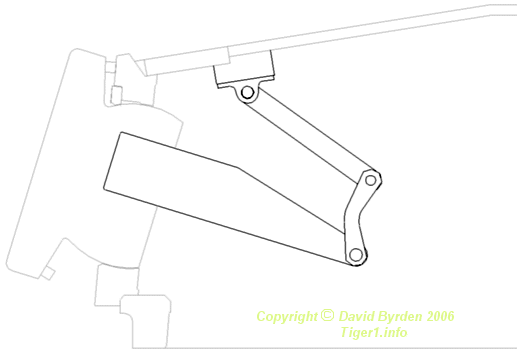
In this diagram, the gun is elevated as high as possible. In practice, equipment in the turret would prevent these limits being reached.
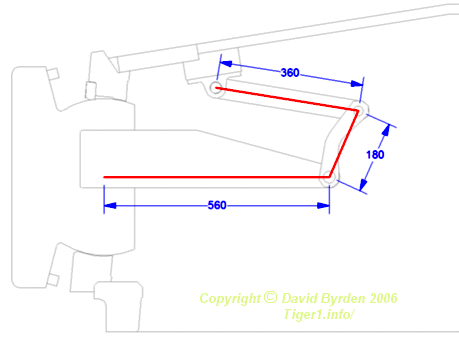
This diagram gives the dimensions of the linkages in the system.
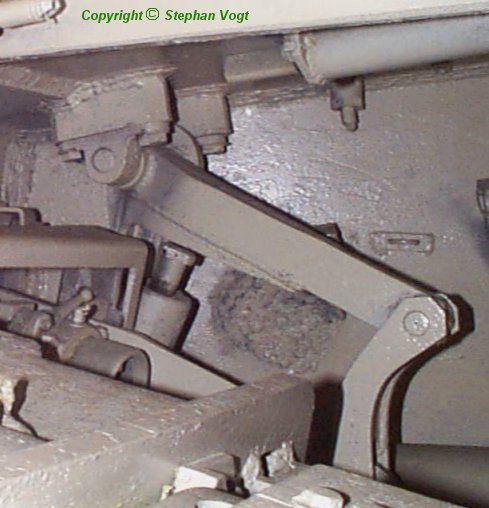
The surviving Tiger #250031 was painted overall light grey by a museum. This makes the machinery easy to see. Here is the arm and linkage, with the gun elevated.
[1] Factory drawing 2AKF31861U1B12: Turmgehause (turret front plates)
[2] Survey of Tiger 250122, at Bovington museum, by David Byrden